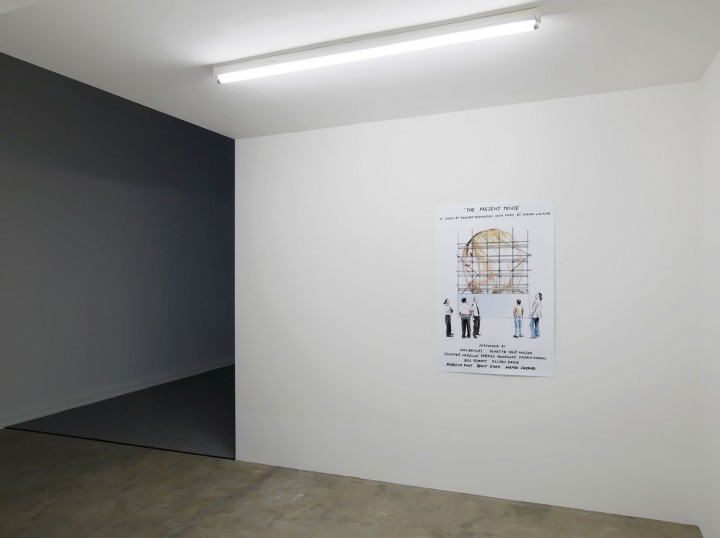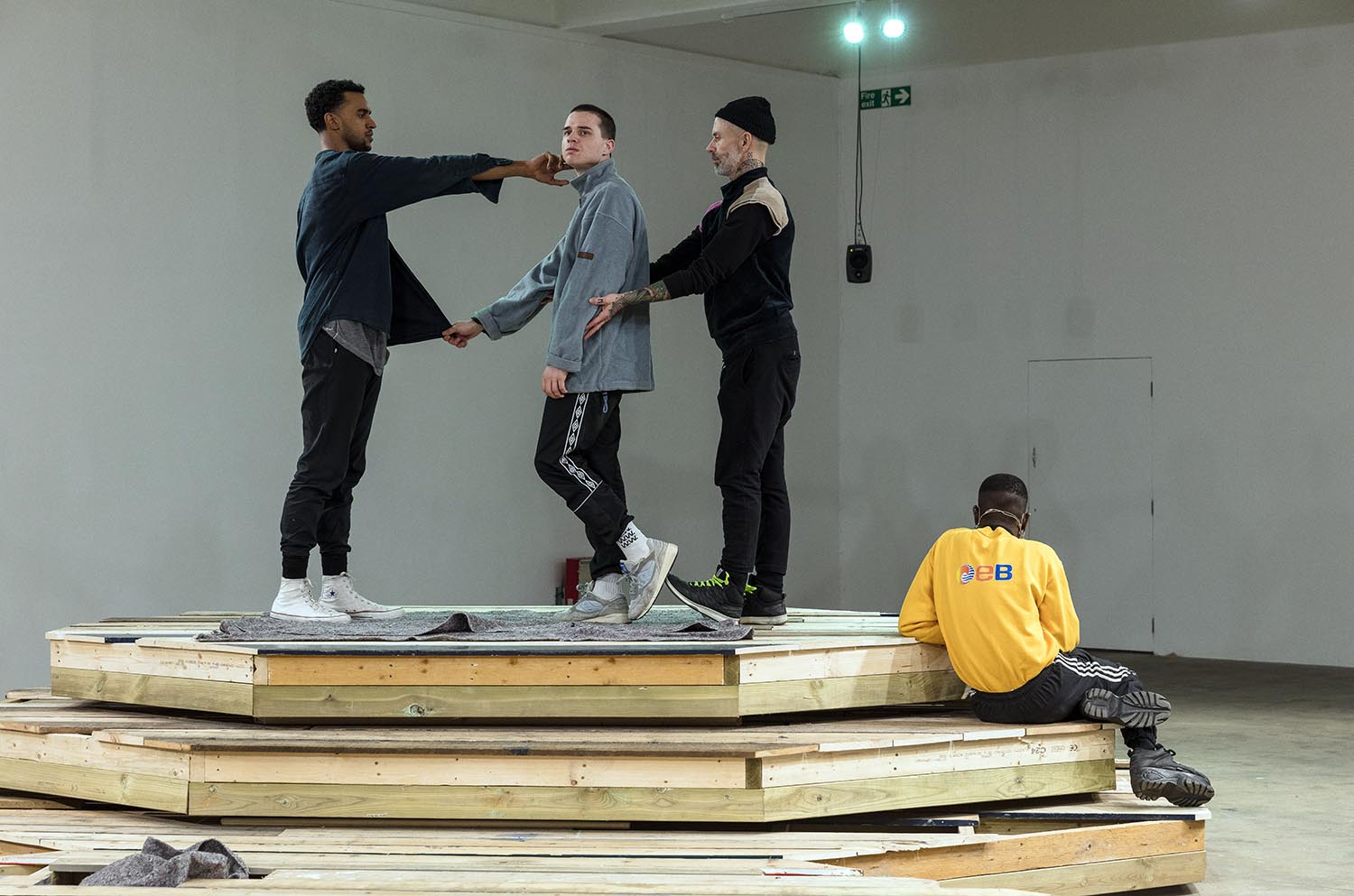When actors break into a musical number, one might normally expect to hear songs of dreams, loves and broken promises. Edward Thomasson’s video The Present Tense is no Umbrellas of Cherbourg, however; its musical performers are a group of policemen demonstrating “stop and search” procedures set to a score by composer Soosan Lolavar. For his first major solo exhibition in London, Thomasson has collaborated with a number of amateur performers living and working in the East End during an eighteen-month residency at Chisenhale. Set against the backdrop of fast-paced urban regeneration, The Present Tense captures how individual identity is constantly negotiated through the stories we tell ourselves and each another.
In the film, the process of demolition and reconstruction of a building site connects parallel narratives in which: a young client reconfigures his inner world in a sandplay therapy session; the policemen perform to a teenage audience; a woman practices mindfulness techniques in her office. A small accident — she falls in the street and grazes her knee — seems to symbolize a process of inner and outer change: the moment of the fall is not shown, but the woman’s hair dramatically turns from brown to blonde. The gradual healing of her skin denotes the passing of time and the erasure of its effects: she notes how her skin will revert to normal, in the same way that the new building will look as though it has always been there.
The Present Tense uses the vernacular of institutional spaces — the therapy room, the classroom, the office — both as a backdrop and a symbol of how collectivity is constructed and constrained by social practices. The policemen’s musical number is central to this — as much as it addresses the difficulties inherent in assessing a situation, the description of “stop and search” routines indicates the uneasiness implied in performing an invasive task that is demanded of an individual in her institutional role. It’s a dynamic that echoes Althusser’s “man in the street” as a subject produced by ideological structures.
Thomasson’s work offers a timely reflection on how the here and now is framed by our struggle to imagine the world around us beyond designated structures — how social interactions and personal aspirations are inevitably channeled through the roles we perform everyday.




